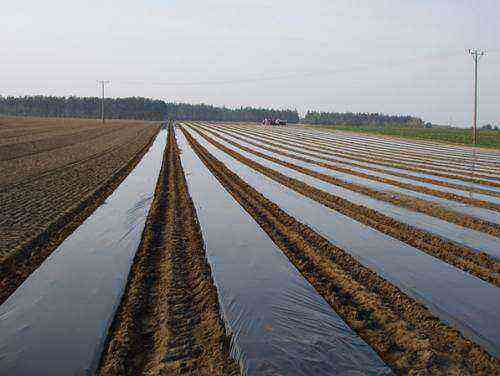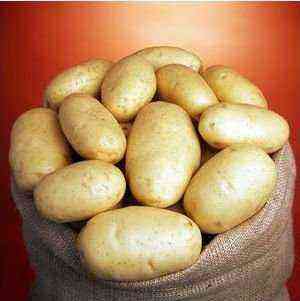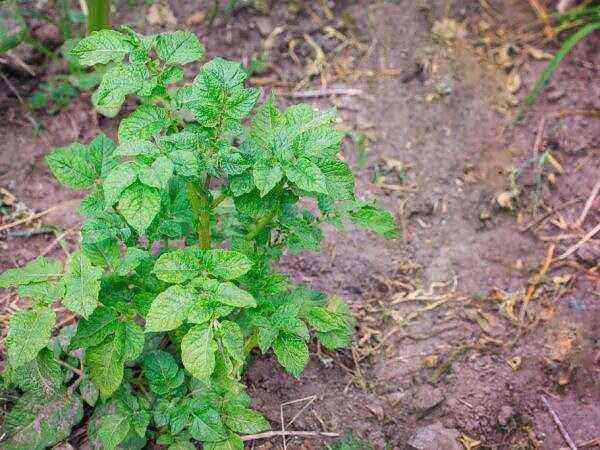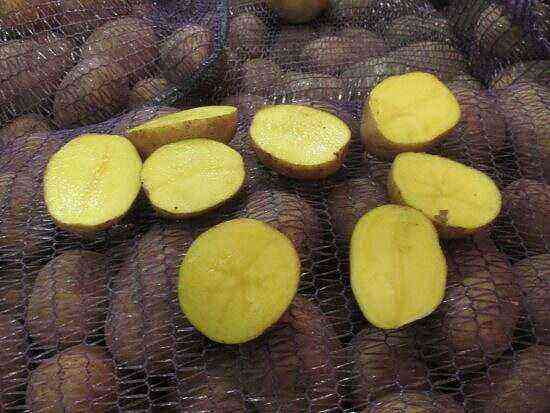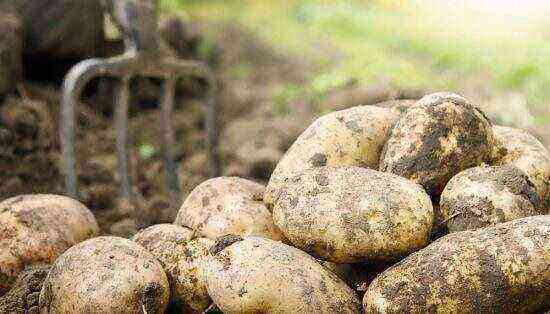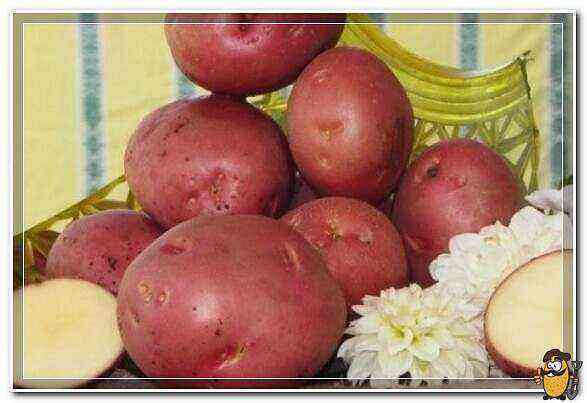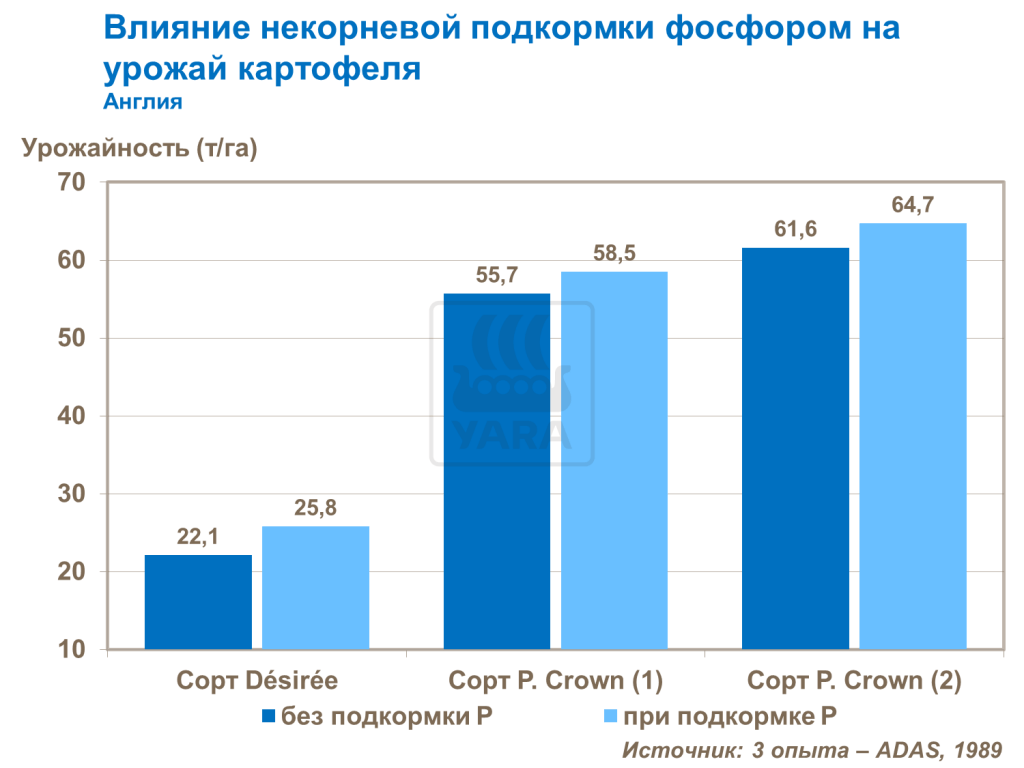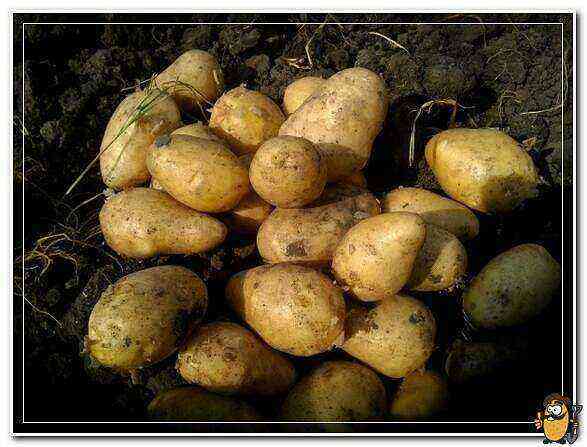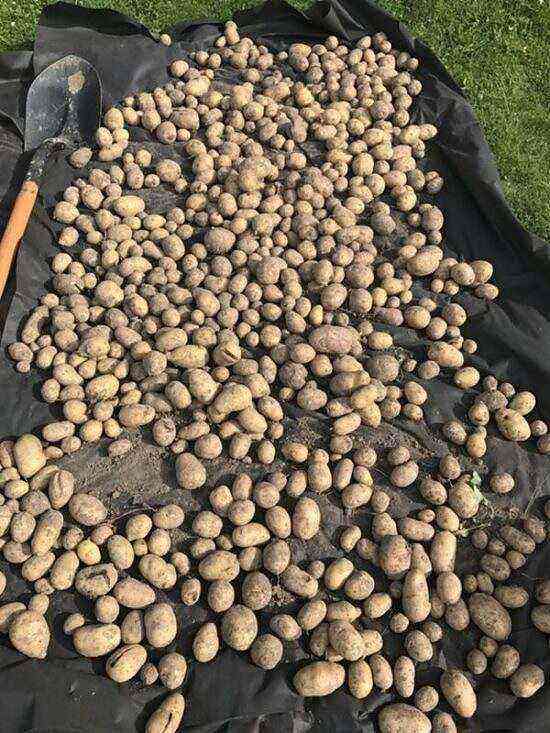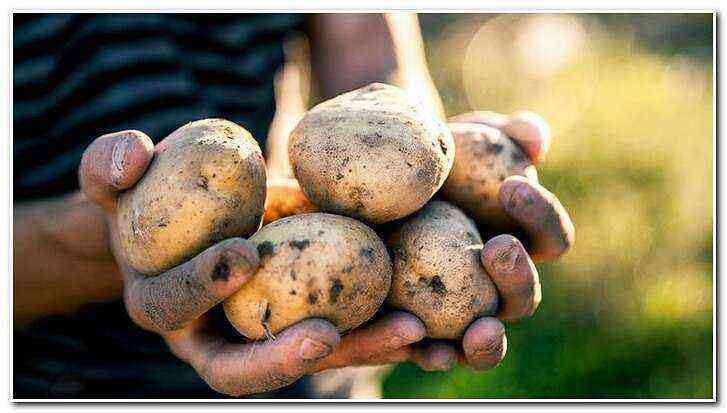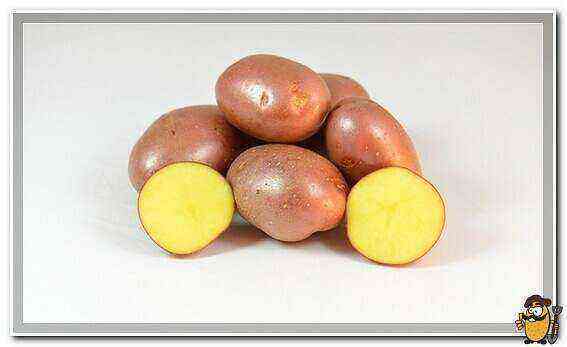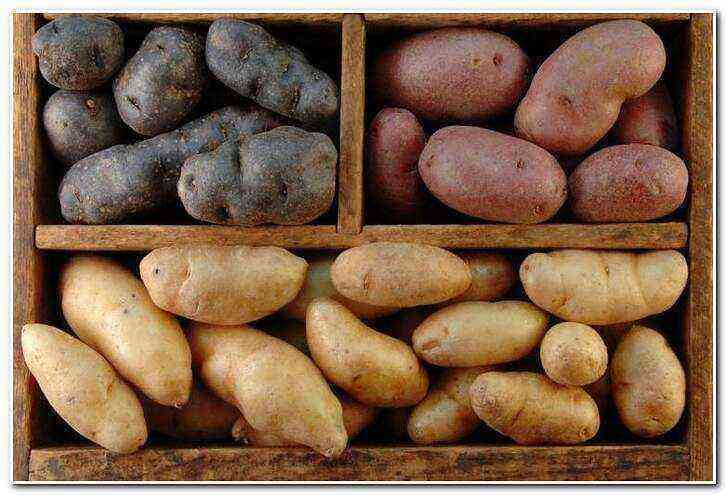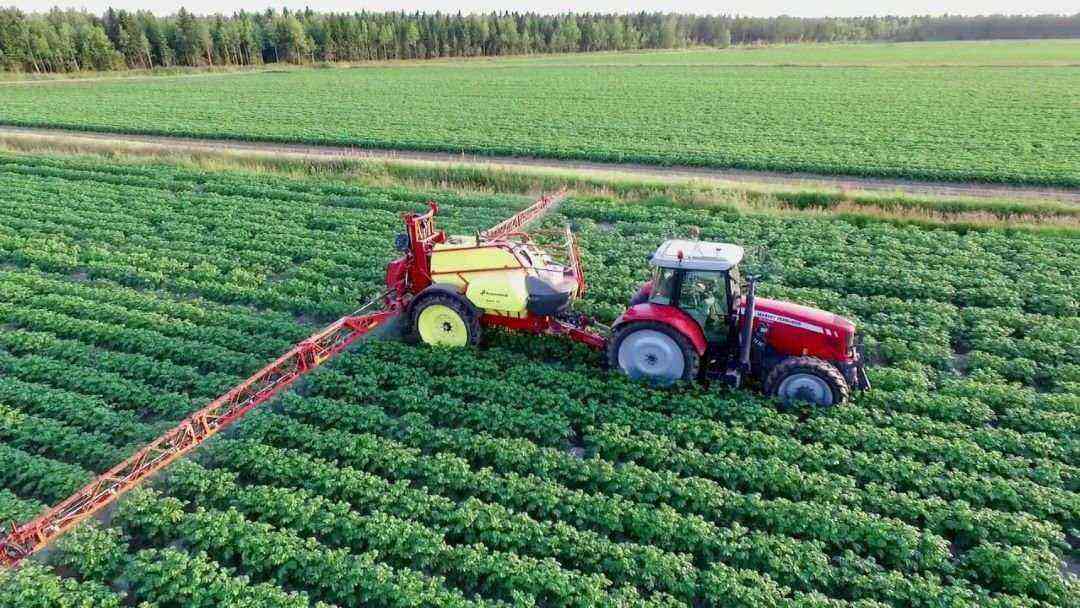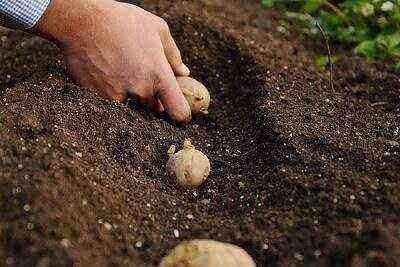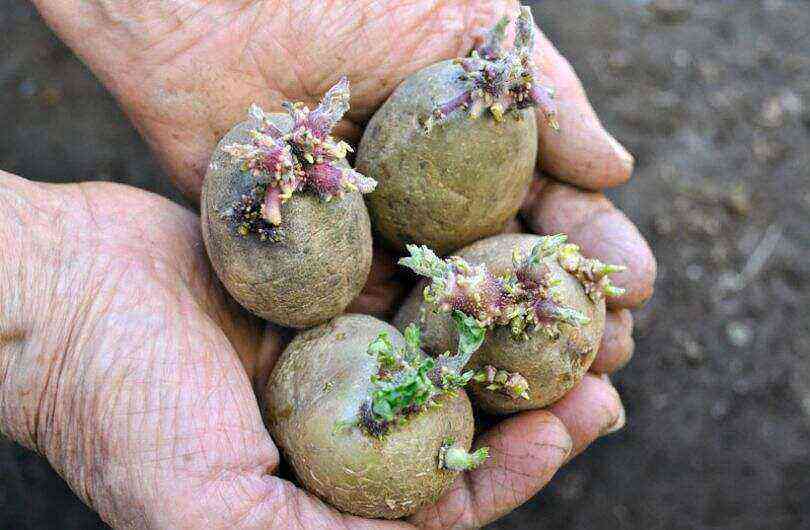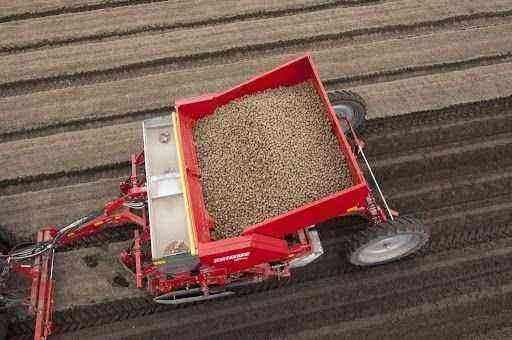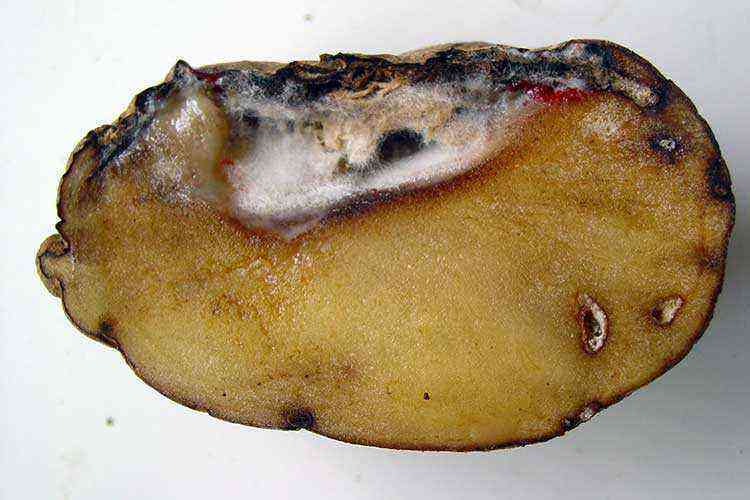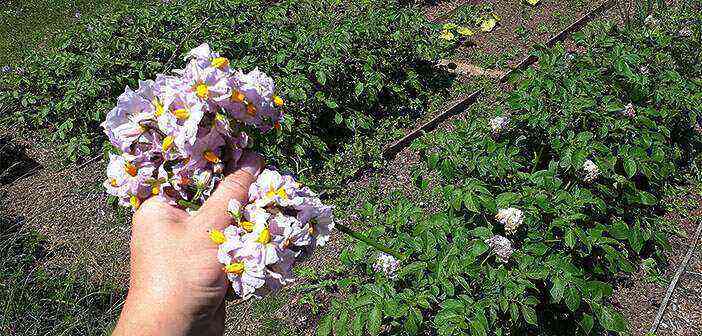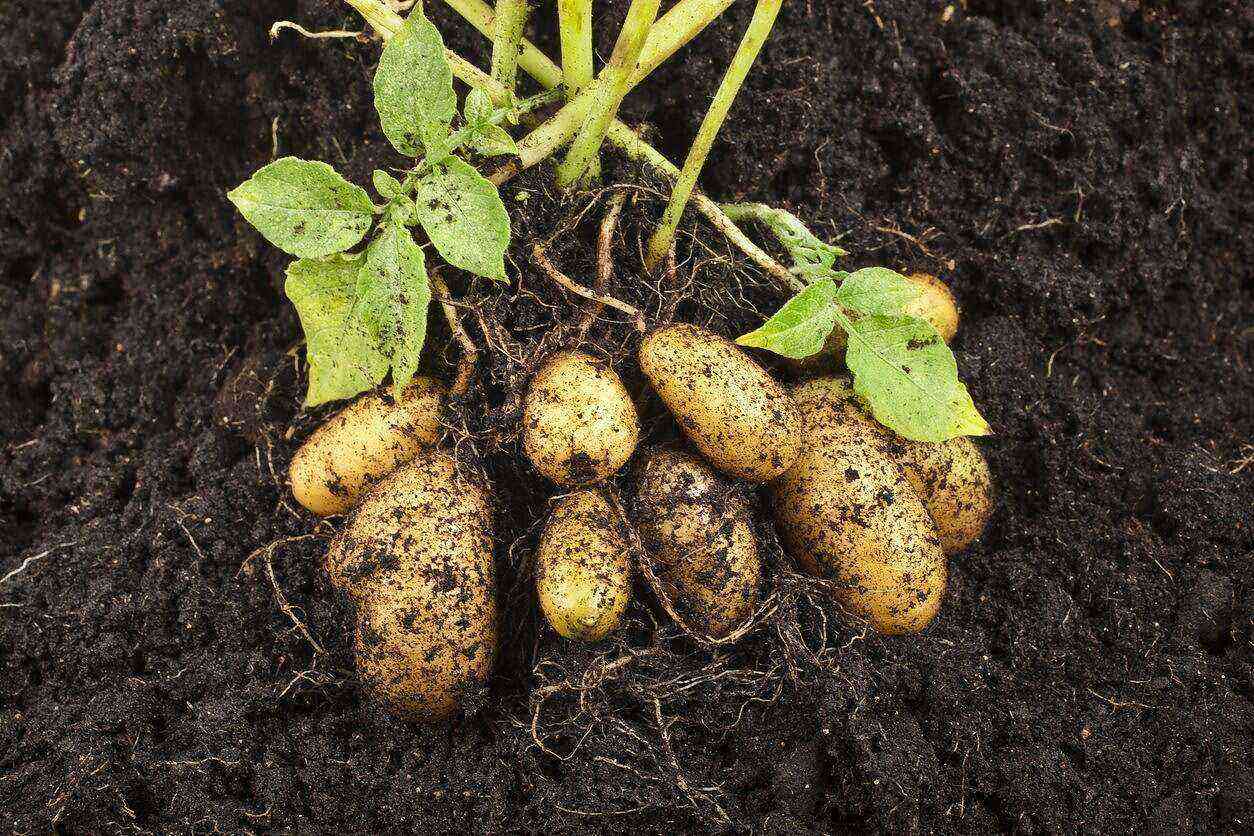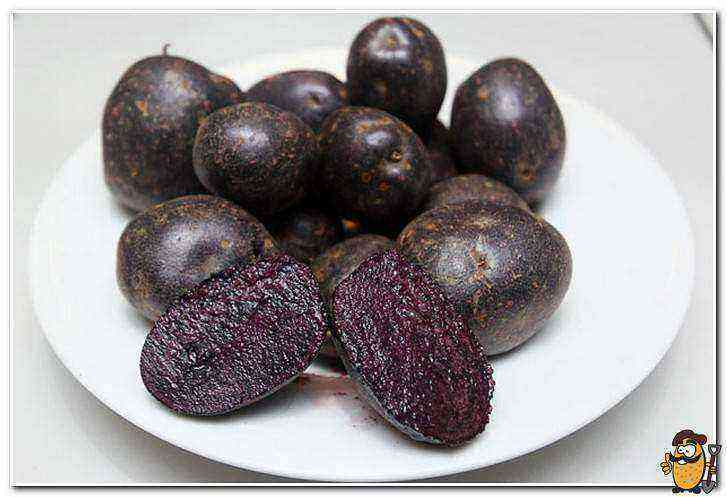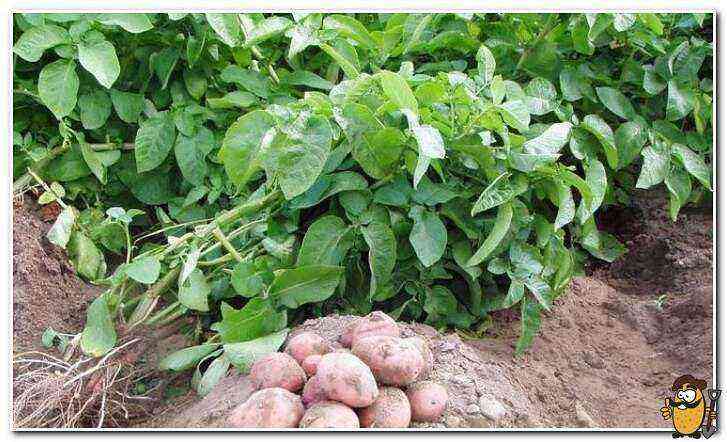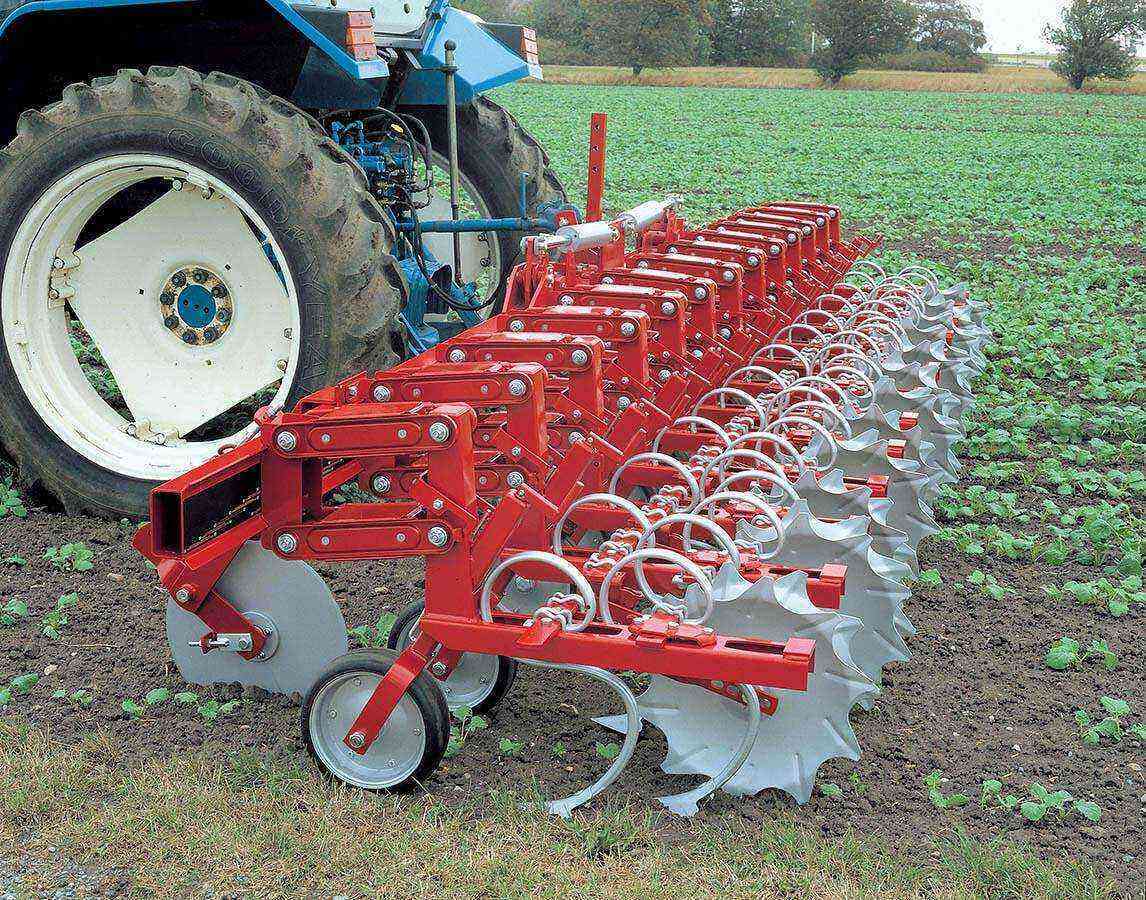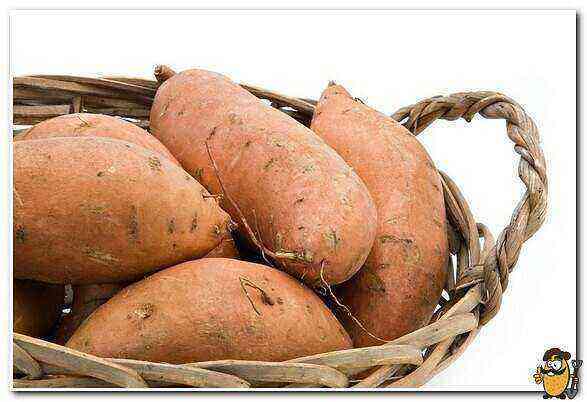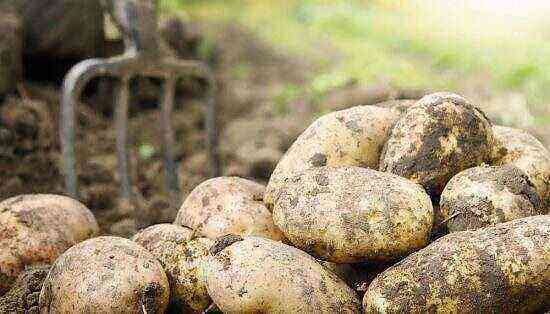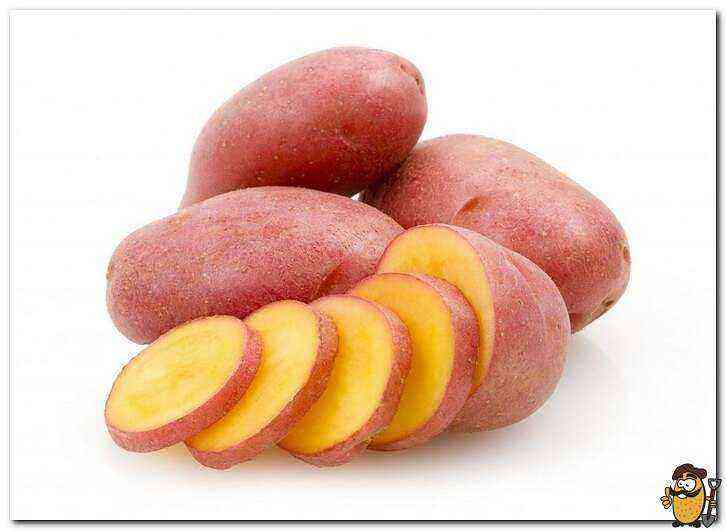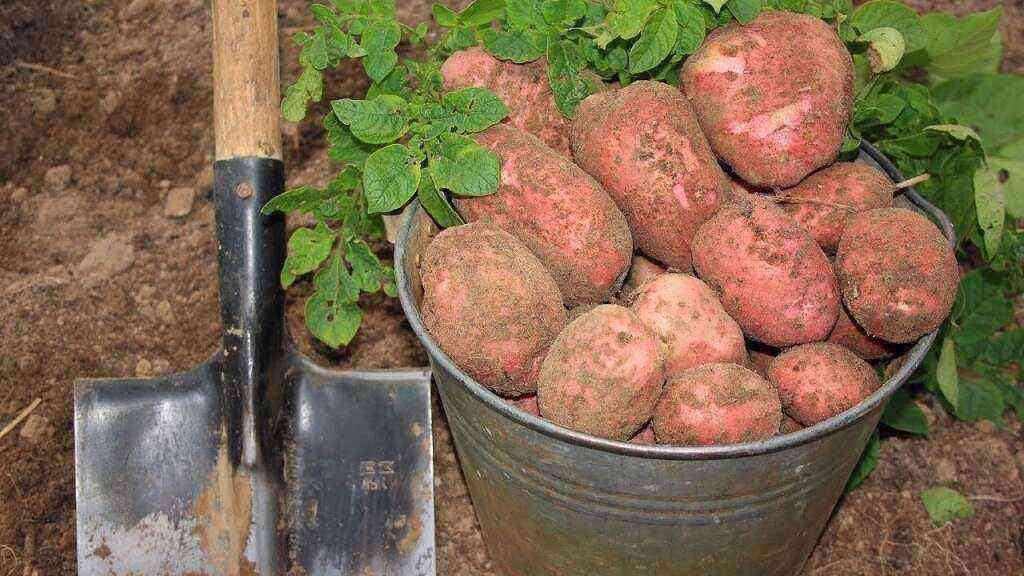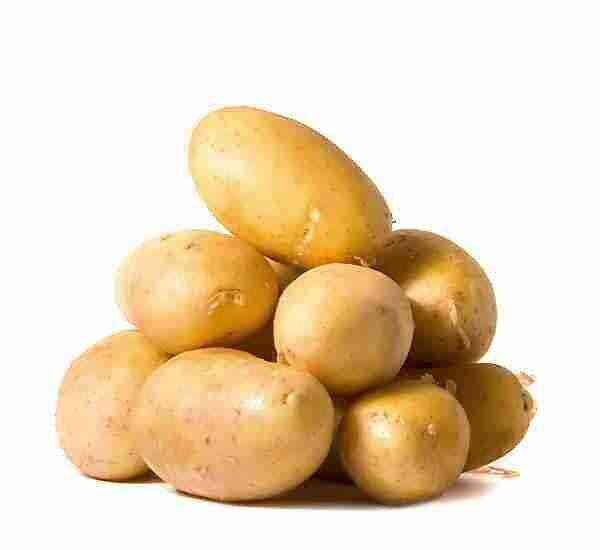Growing potatoes Wizard
For each bush, fertilizers are taken from the calculation: superphosphate – 5-6 g, sulphate or potassium chloride – 3-4 g, ammonium nitrate – 2-3 g. If liquid fertilizing is used as a fertilizer, then shallow grooves are dug in the middle of the row spacing, where make the solution. Two tablespoons of potash and nitrogen fertilizers and four tablespoons of phosphorus fertilizers are taken on a bucket of water. For each bush, 1,5-2 liters of such a solution is taken.
When full seedlings appear, the soil must be loosened, while removing weeds around each bush, and not just in the aisles. On firm and dense soil, loosening should be done deeper. If there are leaves in the ground, lift them up with your hands. If there is a threat of frost, it is necessary to create a smoke screen for potato seedlings. To do this, from the leeward side, along the edge of the garden, heaps of weeds and dry branches are laid out and set on fire when the temperature drops sharply. If the garbage is very dry, then sprinkle it with earth on top to generate more smoke. Before frosts, seedlings, especially at night, can also be covered with earth. After the frost has passed, the soil is leveled with a rake.
The main characteristics of root crops and potato bushes Sorcerer
You can also sprout potatoes in plastic bags, in which you need to cut holes for air circulation. The bags are hung in a bright, warm room at a low height. In this position, all tubers are evenly illuminated, so there is no need to shift them. This prevents the sprouts from breaking off.
The most literate and experienced vegetable growers spend much less time growing potatoes, but at the same time they get a large harvest of much better quality than most other gardeners. The choice of varieties, planting potatoes, hilling – every vegetable grower has his own techniques and secrets of how to grow a good harvest of potatoes.
To create a vegetable container, he digs deep trenches, the walls of which (without a bottom) are laid out with bricks, logs or boards. The width of such a container is 100 cm and a height of 30 cm. The length of such a container can be any, depending on the width of the garden. There can be many such containers, with a distance of 60-80 cm between them. One such “container” holds two rows of vegetables. A layer of sawdust is laid out on the bottom, mixed with grass, straw. Further, a layer of fertilizers – manure, and from above everything is covered with earth.
Growing conditions and watering potatoes Wizard
When this is done, you need to break the entire area for planting into circles with a diameter of two meters. Tubers will be laid out within them, at a distance of 25 centimeters from each other. As soon as the first shoots appear, around them, with the help of a shovel, they form a slide of 30 centimeters with a funnel in the center, in which water will linger. This method of planting helps the plant to form a powerful root system, and in the case of potatoes, this means that the yield increases significantly.
When the potatoes sprout, they must be planted in pre-prepared furrows in the open field. Furrows are prepared in advance, fertilizing with humus. When the potatoes are planted, they do not cover it with earth as usual, but cover it with a layer of humus. In such a generous pie, potatoes grow very quickly and yield much earlier crops than with other planting methods.
We are rural residents and we have no lack of experience in growing potatoes. Collecting 25-35 buckets of tubers from one hundred square meters has always been the norm for us. However, in recent years it has been possible to significantly increase the yield. And we have achieved success due to the fact that we have combined modern and old-fashioned methods of growing potatoes.
Consumer properties of the potato Sorcerer
This variety of potatoes does not require special care – it is enough just to periodically loosen the soil and clear it of weeds. It is also resistant to all kinds of diseases and pests. Including the causative agent of potato cancer and late blight, as well as viral diseases and common scab. In the event of an attack by the Colorado potato beetle, it is slightly damaged. Only susceptible to golden potato cyst nematode. However, you should not experiment too much with this, and still it is better to treat the plant with special means.
If the weather does not spoil your area with rain, then this variety will be the best choice, since it has a very powerful root system. Potatoes of this variety are considered early, and therefore rapid ripening does not require large costs in terms of watering. About three to four waterings are quite enough for the entire ripening period.
Growing potatoes is a simple matter. Everyone, even a little knowledgeable, a gardener considers it his duty to grow it in his garden. And this is absolutely the right decision, because potatoes contain a lot of potassium, starch and vitamins.
How to care for potatoes Wizard
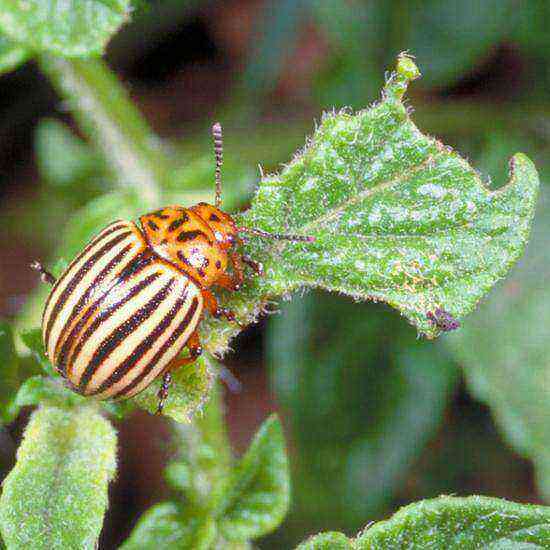
The gardener during the growing season of potatoes has to take the necessary measures to protect against pests and prevent diseases. Viral diseases cause great harm to potatoes. To combat this scourge, only healthy seeds should be planted. You can grow them on your site.
Potatoes are fed with poultry droppings diluted in water. To do this, poultry droppings are bred in a large container, half filled with water, at the rate of 80-100 g per square meter. After a few days, such a solution begins to ferment, and at the end of fermentation, it is diluted with water in a ratio of 1:10. This solution is poured over the soil around the plants at the rate of 1,5-2 liters per bush. Care must be taken to ensure that the solution does not fall on the leaves, otherwise they will get burned.
After the tubers have sprouted, you can start growing seedlings from them. This is done in boxes or in thick paper bags filled with earth. Seedlings should be kept until shoots appear in a dark, cool room, the air temperature in which is 10-12 ° C. When the seedlings have appeared, the seedlings should be transferred to a bright place, and you can plant them in the ground from mid-April. If frosts suddenly hit, then the plant is covered with earth or covered with a film. By this method, you can get potatoes at the end of May.
How the potato variety Wizard is planted

To grow potatoes, you need a loose, fertile, slightly acidic soil. Soil preparation usually begins in the fall. The land should be cleared of weeds – dandelion, wheatgrass, sow thistle, and also to destroy pests in it – bear, click beetle, May beetle and their larvae, from Colorado potato beetle larvae. Then the earth is dug to the depth of the shovel bayonet. When plowing, it plows to a depth of 25-30cm. Before that, it is advisable to add fertilizers to the ground – at the rate of one square meter, a bucket of rotted manure or compost, thirty grams of superphosphate, fifteen grams of potash and phosphorus fertilizers are mixed.
This is another way to harvest potatoes very early. What is necessary. First of all, these are high-quality potato tubers and dense black material with no tissue structure. The landing site is processed in a standard way, i.e. dig up and fertilize. Further, the areas for landing are covered in one layer with a black cloth, well strengthening its edges. After that, cuts are made in it (in the form of a diamond) for planting potatoes. In these incisions, a recess is dug, a tuber is placed there, buried in and again covered with a cloth.
This method is suitable for those who do not have a potato growing area. You will need large, high-strength plastic bags. The basis for growing is poured into them – a mixture of humus, soil and compost. When the bags are tightly filled, diamond-shaped cuts are made around the perimeter at a distance from each other. Tubers of already sprouted potatoes will be planted here. Such a “bag – garden” can be hung in any convenient place, but only if there is sufficient natural lighting. This can be a garden (but not in the shade), ditches, etc. To collect such a crop, you do not have to work for a long time, you just need to carefully cut the bag and shake out the tubers.
Modern and old-fashioned methods of growing potatoes
This is one of the oldest ways to grow this vegetable. It is believed that the famous vegetable grower Rytov was its creator. So this way assumes that
Potato pests
The topic of potato pests and diseases is very important. Unfortunately, with improper agricultural techniques, the risk of damage from various diseases is great. Affected potatoes suffer great storage losses. The list of malicious pests of potatoes is not great, because the most delicious in potatoes is tubers, hidden by the soil, and tops, like all members of the nightshade family, scares away most insects. But the spectrum of pathogens dangerous for potatoes is very large. After all, tubers are found in moist, loose soil, presenting a tempting target for microbes.
How to keep your potato crop
For the prevention and control of viral diseases (speckled, annular, aucuba mosaic and others), insecticide spraying can be used (no more than 3 treatments per growing season), effective against the main vectors – aphids, cicadas and grass bugs. For the benefit, it is good to feed with organic matter (mullein, etc.) and use growth regulators.
Due to the spreading shape of the tops, moisture is retained in the soil for a longer period, evaporation under the scorching sunlight is not so intense.
Potatoes in a box
Of course, before you start sowing potatoes, you should decide on the variety. For this, climatic conditions and, of course, the characteristics of the soil should be taken into account.
To do this, after harvesting early crops, it is necessary to destroy all diseased plants that were identified during the growing season. The greatest danger is represented by fungal diseases. Therefore, for prevention, you need to carry out one or two sprays – at the beginning of flowering, and then at the beginning of the appearance of the bud. Potato tubers should be monitored during storage, as after a couple of weeks the harvesting field may be a problem.
You can also feed the potatoes with slurry. It should be borne in mind that you need to feed with one thing – either bird droppings, or manure. The excess in this case will not play into the hands of the potato. After top dressing, the soil must be spilled or loosened.
Potatoes in straw
To make it easier to care for the potatoes, the site is marked out before planting or the potatoes are planted along a cord. The distance between the rows should be 60 cm, and between the potato bushes – 30 cm. Potatoes are planted to a depth of 6-10 cm when the soil warms up to no less than 5 ° C. Before the first loosening or even during planting, nitrogen fertilizer is applied to the soil.Nitrogen fertilizers are left until spring because they dissolve very easily. If the soil in the garden is acidic and heavy, which can be determined by the weeds growing there – sorrel, horsetail, plantain, then another 300-500 g of lime or ash per square meter is added to the ground in the fall. It is not necessary to break up clods and level the dug earth, because large clods of earth trap snow better. Therefore, more moisture will accumulate in it, and the pests remaining in the ground will die.This approach will not only save the crop from freezing, but also prevent weeds from germinating, hammering potatoes and sucking useful elements from the ground. You will get the harvest a month earlier than with conventional cultivation. When it comes time to harvest the potatoes, you need to cut the tops and remove the cover from the ground. The crop itself will be located at the very surface of the earth, which will greatly facilitate its collection.
Potatoes are loved and grown not only in European countries. Here, for example, is how the Chinese advise to do it. We need to dig three holes, each a little more than half a meter deep, and in the perimeter 70 by 70. The bottom of each hole is generously covered with rotted manure (0,5 buckets). The earth that remained after digging a hole is not scattered, but mixed with two buckets of humus, it gradually goes back into the hole.
Potatoes under the slide
For better preservation of potatoes in the cellar, it is important not only to remove them from the field in time, it is necessary to sort the tubers taking into account their condition and the period of consumption. It is recommended to dig potatoes when they are ripe, that is, as soon as the tops turn yellow. However, due to circumstances, I had to harvest the potatoes ahead of time, when the aboveground mass was still green, or much later than the due date.
Potatoes in a bag
But since the Sorcerer potato has high characteristics, it may well be sufficient to adhere to simple rules: early planting and early harvesting, planting bushes not close to each other (to avoid contamination with contact viruses), timely removal of tops and basic agrotechnical measures (hilling, watering , weeding).
We grow potatoes according to the Chinese method
In the event of prolonged daily rains, when many varieties of potatoes begin to turn black and, ultimately, may even die, the variety Sorcerer shows increased vitality.
Today I would like to tell you about a wonderful variety that belongs to the superelite category and is a novelty of Russian selection – this is the Sorcerer potato.
Potatoes in a barrel
The greatest danger to potatoes is the Colorado potato beetle. He himself, and his larvae, are very gluttonous. The damage they cause to the leaves has a significant effect on the yield. To combat the Colorado potato beetle, the plant is treated with biological and chemical preparations.
Another way to grow potatoes in a barrel
To obtain high yields of potatoes, you need to regularly water the soil, because in heat and drought, the growth of the bushes stops, and the subsequent rains cause the tubers to become ugly and grow. Potatoes are watered in the evening, at the rate of at least two to three liters for each bush. Watering should be done 3-4 times a week. Watering during flowering and tuber formation is very important. The day after watering, you need to loosen the ground with hand hoes.
Growing potatoes in a “vegetable container”
There is a practice of growing early potatoes from tubers with long shoots. To do this, they are germinated for 30-40 days at a temperature of 12-14 ° C, in a dark room, periodically wetting them with water until long shoots appear. For cultivation, tubers with a large number of sprouts weighing 70-100g are taken. Such tubers are planted by pulling out the sprouts and sprinkling them with earth, due to which a multi-stemmed bush is obtained. Each stem forms tubers underground. This planting method allows you to save seed material by half, and the yield increases by one and a half to two times. This method of growing potatoes is used with good irrigation.
Early potatoes under black material
Many gardeners ask how to grow potatoes from seeds. The best material for planting potatoes is tubers from a summer planting or two crops, but you can also use ordinary tubers obtained from a one-time spring planting. When growing potatoes with tubers, the best bushes should be noted before harvesting. After that, you need to choose from them healthy tubers of the correct shape. If during harvesting there is at least one diseased fruit in the bush, then it is better not to leave the rest of the tubers from this hole for planting.
So, the Chinese method of growing potatoes, put 3 tubers of sprouted potatoes at the bottom of each pit, and cover with prepared soil 10 cm. When the potato stalk grows up, add more soil and water. This procedure is repeated regularly, only 6 times during the entire growth period. For a significant increase in yield, fertilize with water diluted in it with poultry droppings, in a 2: 1 ratio. If you follow all the rules, then one such bush will give you 5 buckets of excellent potatoes.
… We make a bed, thoroughly compact its walls and put the tubers on the bottom.
Growing potatoes is not limited to the standard planting of it in the ground, and waiting for the harvest with regular grooming of the bush. Craftsmen gardeners have long come up with many ways to grow an excellent potato crop with minimal effort and time. Let’s take a look at some of the most common methods.
Cultivation is carried out in the open field: “former” places of growth of perennial and annual grasses, flax, winter crops and grain crops are suitable. It is customary to plant seed potatoes from late April to early June (depending on the region and its climatic conditions), to a depth of about 10 cm, according to the scheme 60 * 35 cm (the distance between rows is about 60 cm, between bushes in one row is 35 cm). In the meantime, there is no need to know about it. ”
Potato soil
This variety has excellent taste characteristics. The Fascinator potato is distinguished by its light creamy pulp and sweetish taste. After cutting, the tubers do not darken in water and do not give a dark broth.
This variety has the shape of an oval, a fairly even light brown skin with small eyes.
Seed potato preparation
Other methods of struggle are also used. The potato leaves and soil around the bush should be checked regularly. Beetles, ovipositions and larvae are collected in a bowl containing kerosene or a saturated salt solution. Timely weeding, hilling and loosening also helps in the fight against the Colorado potato beetle.
When caring for potatoes, you must avoid damaging the tops, as this reduces the yield. Gardeners, who do not know much about the characteristics of potato growth, are afraid of too strong development of the potato bush. But in vain. Strong, healthy tops, on the other hand, are favorable and provide a high yield of tubers. A drop in yield occurs when there is a lack of light or nitrogen in the soil. In order to correct these shortcomings, it is necessary to abundantly feed the plant with sulfate or potassium chloride and superphosphate, which contribute to the formation of a tuber. It should also be borne in mind that potato plantings are not placed in highly shaded areas.
The emergence of seedlings can be accelerated by covering the planted areas with a black film. The film is removed after germination. You can leave it, but in order for the shoots to grow outward, you need to make cross-shaped cuts in it over each bush. This method greatly simplifies the care of potatoes, because soil moisture remains under the film for a longer time and weeds do not germinate.
Selected tubers should be well dried and then kept in diffused light for one and a half to two weeks for landscaping. For this purpose, the potatoes are sprinkled in one or two layers, periodically turning it over. When all the pulp from its surface to the middle of the tuber is greenish, the gardening can be finished. These tubers are stored until spring, without sorting. It should be remembered that such tubers cannot be eaten either by oneself or given to livestock for food, because they contain corned beef – a poisonous substance.
Growing seedlings and potatoes themselves
“Antoshka, Antoshka, let’s go dig potatoes!” The words of this children’s song are known to everyone. But in order to drip potatoes, they must first be grown. In our country, potatoes have always been one of the staple foods. It is not for nothing that the people call it “the second bread”. Therefore, it is grown by everyone who has the opportunity, and, of course, the desire. It should be noted that the yield of this irreplaceable vegetable crop in vegetable gardens and household plots is still very low.
This method does not involve growing potatoes directly in a barrel, and is ideal for very small areas. The gardener needs to dig a hole at least 40 centimeters deep, which is a kind of “barrel”. The bottom of the barrel is laid out with a layer of compost, about 8 cm. A large, healthy tuber is laid on such a pillow. It is covered with a ten-centimeter layer of compost. When the sprout reaches 3 centimeters, it is again covered with a layer of 2 cm. This procedure is repeated regularly, and at the end of the ripening process, you will gladly find that the pit is completely filled with excellent potatoes. Thus, under excellent conditions, you can collect a bucket from one such barrel.
Next, cover them with damp straw (20 cm). This coverage is sufficient for the fruitful growth of this root crop. To forget about the hated weeds around the potato bushes, it is necessary to increase the straw layer by another 5 cm, and carefully cover the top with a film through which light does not penetrate. As soon as the potato sprout sprouts, you need to make a gap in the film, but do not remove it.
To get an early harvest, potatoes do not need to be planted in open soil. An ordinary wooden box will help you, the bottom of which is covered with two layers of sheets of paper. Next, a 5-7 cm layer of nutrient soil is formed, from the humus of tree leaves and sawdust. This layer must be moistened with a solution of superphosphate and ash.
Care of potatoes
The ripening period of potatoes from the moment of germination above the ground is on average 60-80 calendar days (but not more than three months), the tops die off from the moment of planting in 100-115 days. From one hectare, about 200-300 centners of potatoes can be harvested without problems (in a productive year, it reaches 400 centners / ha).
By the way, the fruits of this potato do not have internal voids, which is very convenient for cleaning and cutting.
Top dressing of potatoes
The leaves are small, oblong and smooth at the edges. In size it reaches from 14 to 21 cm. Potato inflorescences are large in size and have a pleasant smell.
With proper preparation of tubers and proper care of the soil and seedlings, you will be assured of a good potato crop. Summer plantings are harvested in early autumn. Tubers are better stored from it, and they begin to germinate only in April. It should be noted that the potato tuber is a living organism in which physiological processes continue after harvesting. They must be removed carefully: they cannot be thrown, they should be carefully placed in bags or boxes. Care is also needed during transportation. The storage temperature is reduced gradually, bringing it to 1-3 ° C.
As soon as the tops have grown by 15-20 cm, you should start hilling the plant. The soil is raked to the tops with hoes so that a small tubercle forms around the bush, which will cover the lower part of the stem to the leaves. Before hilling, it is useful to feed the potatoes with organic or mineral fertilizers. They should be scattered between rows five centimeters from the stems. When hilling, these fertilizers are buried under the bush.
Potato care should be started almost immediately after planting. Many gardeners often make the mistake of postponing leaving until the first shoots appear. The fact is that the germinating tubers in the soil constantly need access to air, the flow of which can be provided exclusively by loosening. Moreover, many weeds come out of the ground much earlier than potato sprouts. These weeds grow very quickly, consuming a lot of nutrients and moisture, which they take from crops. Thus, they oppress the potato, which, in turn, affects the size of its harvest. Therefore, it is so important to remove and weed young growth of weeds, which die at the slightest damage from the rake or harrow teeth. With rooted weeds, it is much more difficult to control. It is also necessary to loosen the soil after watering and rains, since a hard crust appears on the surface of the earth, which disrupts normal air exchange, which significantly delays the germination of potatoes.
Hilling of potatoes
If you want to get an early harvest of potatoes, then they should be cooked well before sowing. Three to four weeks before planting, potato tubers should be placed in warm, light rooms for germination. Potatoes can also be germinated in boxes with wet sawdust, which are placed in a room with a temperature of 12-14 ° C. During this period, shoots begin to form and the root system develops.
But the potential for the best potato varieties is up to 700 centners per hectare, or even more. The reason is that the land loves skillful and careful care. The key to a high yield of potatoes is the use of good elite varieties, as well as competent agricultural technology. How to grow potatoes to get a big harvest? What are the methods of growing it? This is what we will talk about in this article.
Potato pest and disease control
Now you really need a barrel for growing, or any high container without a bottom. It is installed in a permanent place, and a layer of a mixture of earth and compos is poured at the very bottom (up to 15 cm). A couple of potatoes are placed on it along the diameter of the barrel or in a checkerboard pattern, and again covered with the same mixture. As the stem grows, the layer is gradually increased. As a result, you get about a meter layer. It is very important that the sprouts cannot fully emerge and dissolve the leaves. This forms an extensive root system with a lot of potatoes. Don’t forget to water regularly!
This is one of the largest yields of potatoes. First of all, it is necessary to thoroughly fertilize the site, for which manure is taken out on it, in the calculation of up to three buckets per one square meter, as well as mineral fertilizers and ash are scattered. The next step is to dig the site.
Tubers of potatoes are placed in rows on the formed pillow, but certainly selected, without damage and signs of decay. Then it takes time and heat from the sun, but the box is covered from direct light rays, which can cause the potatoes to turn green. It is necessary to regularly spray the tubers, for which filtered water is perfect, or ideally thawed water.
According to experienced breeders, potatoes have a high yield, thanks to which they can be planted twice a season. And what is remarkable, for the second time, the potatoes are in no way inferior in taste or quantitative characteristics to the first.
Cleaning and storage of potatoes
Cooking it quickly enough, when cooking, it becomes moderately crumbly. This particular variety is considered the best for making mashed potatoes or fried potatoes. The Wizard potatoes are stored for winter harvesting for a long time and without problems. It is also not susceptible to long-term transportation.
The tubers themselves are quite large (about 115 grams), starchy (13-15% is slightly above the norm), with dense white flesh. Flowering bushes have an attractive appearance: lush, straight, light green in color with numerous white flowers.
At subzero temperatures, potatoes may die, so it is unacceptable. At zero temperature, the starch in the potato tubers turns into sugar, which makes the tubers sweet. But this process is reversible, and the taste of the potato is restored if it is kept at room temperature for several days. Potatoes are stored in dark storages with a relative humidity of 80-90%: basements, cellars, underground. In dry storage, tuber weight is lost. High humidity is also unacceptable. Therefore, the room must be well ventilated. Potatoes can also be stored in temporary storage facilities – trenches, pits, piles. They also keep potatoes well.
